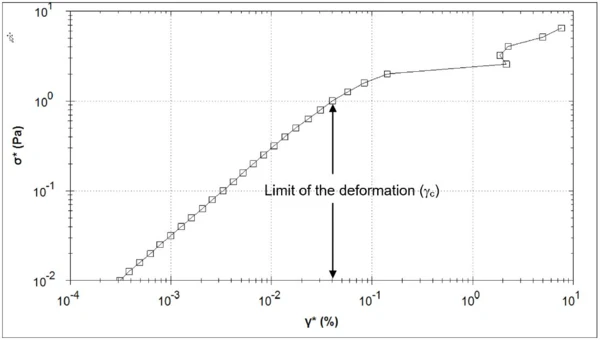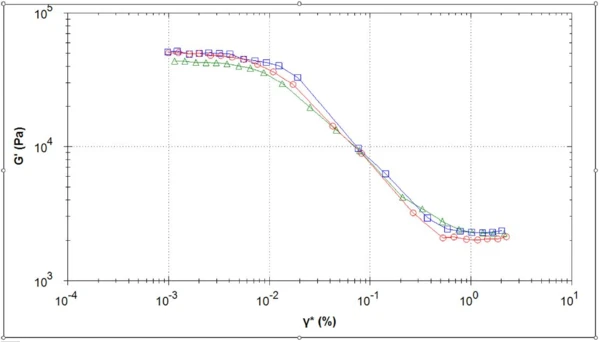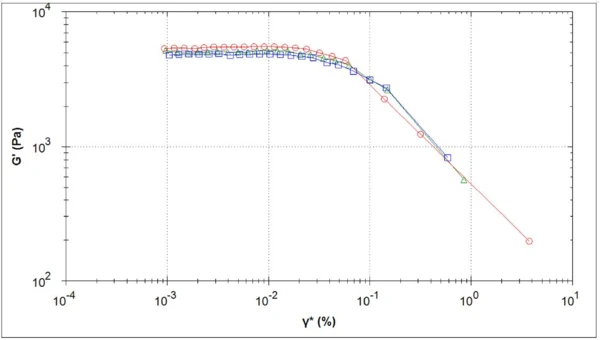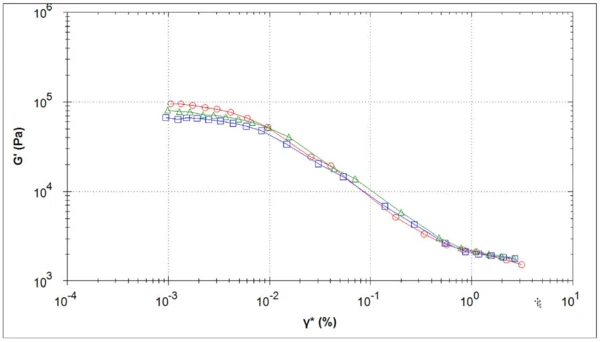Introduction
Compaction is defined as the “formation of a solid specimen of defined geometry by powder compression” [1]. The compaction of a pharmaceutical powder into a tablet consists of three different steps. First, the powder containing the active ingredient and the different excipients is filled into the die. In a second step, the powder is compressed. Finally, the tablet is ejected and can be packed.
The efficiency of processing, particularly in the first step, depends on the flowability of the formulation [2]. In turn, many factors influence the flow behavior of powders: particle size and particle size distribution, moisture content, temperature, interactions of the excipients with each other, interactions between the active ingredient and the excipients, etc.
Formulations used in the pharmaceutical industry for the production of tablets are a mixture of different powders that can interact and affect processing of the tablet. In the following, we study the impact of magnesium stearate on the interaction of spray-dried lactose particles.
Materials
Two commercial samples were subjected to rheological analysis:
- Spray-dried α-lactose monohydrate, consisting of 10% to 20% of the amorphous phase and 90% to 80% of the crystalline phase
- Magnesium stearate
Method
Sample Preparation
Spray-dried lactose and magnesium stearate were measured as received. Three mixtures of spray-dried lactose with 1% (w/w) magnesium stearate were prepared and measured under the same conditions as the pure substances. The mixtures were prepared just prior to the measurements.
The powders were manually tapped 10 times in order to obtain a volume of 31 ml, which corresponds to 20 g of lactose and lactose-magnesium stearate mixture or 9.5 g of magnesium stearate.
Rheological Measurements
A Kinexus ultra+ Prime equipped with a cylinder cartridge was used to perform the measurements. A cup with a diameter of 37 mm was introduced into the cylinder cartridge and a 2-blade metal paddle (diameter: 32.5 mm, stainless steel 1.4404) was used as upper geometry.
A volume of 31 ml of the powder was placed into the cup. The upper geometry was introduced into the cup at a constant angular speed of 5 rad∙s-1 and lowered at a constant speed of 1 mm∙s-1 until an absolute gap of 5 mm was reached.
Fluidization
Each sample was subjected to a fluidization step consisting of a shear viscosity ramp between 100 s-1 and 3,000 s-1 followed by a 5-minute rest. During this step, interactions between the particles are reduced [2] and the influence of the sample history is deleted.
Powder flowability is very sensitive to different factors, e.g., sample storage and preparation. After the fluidization step and some minutes at rest, all materials had been subjected to the same preparation and had the same history.
Amplitude Sweep
After the fluidization step, an amplitude sweep was performed on the powder at a controlled temperature of 25°C and a controlled frequency of 1 Hz. During the measurement, the shear StressStress is defined as a level of force applied on a sample with a well-defined cross section. (Stress = force/area). Samples having a circular or rectangular cross section can be compressed or stretched. Elastic materials like rubber can be stretched up to 5 to 10 times their original length.stress was varied from 0.01 Pa to 50 Pa. Each material was measured three times with a new loading.
Method for Determination of the Cohesion Energy Density, Ec
The cohesion energy of the powder denotes the energy required to separate two particles in contact. The cohesion energy density, Ec, is the ratio of the cohesive energy and the volume of particles. [3]
It can be determined as the area below the curve of shear StressStress is defined as a level of force applied on a sample with a well-defined cross section. (Stress = force/area). Samples having a circular or rectangular cross section can be compressed or stretched. Elastic materials like rubber can be stretched up to 5 to 10 times their original length.stress versus shear StrainStrain describes a deformation of a material, which is loaded mechanically by an external force or stress. Rubber compounds show creep properties, if a static load is applied.strain that is measured in the linear viscoelastic region (LVR) of an amplitude sweep (see also figure 1).

γ(critical): shear StrainStrain describes a deformation of a material, which is loaded mechanically by an external force or stress. Rubber compounds show creep properties, if a static load is applied.strain at the end of the linear region
σ´= Elastic shear StressStress is defined as a level of force applied on a sample with a well-defined cross section. (Stress = force/area). Samples having a circular or rectangular cross section can be compressed or stretched. Elastic materials like rubber can be stretched up to 5 to 10 times their original length.stress

In the LVR, the following is valid: G´ = σ’/ γ ´
So that (1) can be rewritten as follows:

In a simplified way, the powder is represented as a viscoelastic material, which can itself be characterized as a combination of springs and dashpots. The stability of the material, in this case the cohesion of the powder, can be quantified with the elastic part (related to the springs) of the mechanical energy. The viscous part does not contribute to cohesion because the stresses imposed on the dashpots are not stored, but lost as heat.
Consequently, the cohesion energy density is calculated with the values of the elastic shear modulus during the LVR plateau and the StrainStrain describes a deformation of a material, which is loaded mechanically by an external force or stress. Rubber compounds show creep properties, if a static load is applied.strain at the end of the plateau.
Measurement Results and Discussion
The apparent shear viscosity resulting from the fluidization step performed on spray-dried lactose is shown in figure 2. It decreases with increasing shear rates and reaches a plateau at 1000 s-1. This independency of the apparent shear viscosity with respect to the shear rate in the high shear rate range shows that the applied shear rate was high enough to erase the sample history.

Figure 3 depicts the elastic shear modulus curves resulting from three amplitude sweeps carried out on spray-dried lactose just after the fluidization step, for three different loadings. The good repeatability of the curves confirms that the samples shared the same state after the preparation phase.
At low deformations, the curves remain constant: The powder is in the linear viscoelastic region, where the applied deformations do not lead to any structural breakdown and the applied shear StrainStrain describes a deformation of a material, which is loaded mechanically by an external force or stress. Rubber compounds show creep properties, if a static load is applied.strain is proportional to the resulting shear StressStress is defined as a level of force applied on a sample with a well-defined cross section. (Stress = force/area). Samples having a circular or rectangular cross section can be compressed or stretched. Elastic materials like rubber can be stretched up to 5 to 10 times their original length.stress. At a StrainStrain describes a deformation of a material, which is loaded mechanically by an external force or stress. Rubber compounds show creep properties, if a static load is applied.strain of 4E-03 to 5E-03%, the material leaves the linear viscoelastic region. This means that for the timescale of the frequency used (1Hz), the powder begins to flow.

Figure 4 depicts the elastic shear modulus curves resulting from the three amplitude sweeps performed on magnesium stearate. The elastic shear modulus value in the linear viscoelastic plateau is almost one decade lower than for the spray-dried lactose, while the plateau is broader.

Figure 5 displays the three curves obtained for the mixture. Obviously, the LVR plateau is shorter for this sample than for the lactose and the magnesium stearate taken alone.

For better comparability, all curves are plotted in figure 6.

The end of the linear viscoelastic region was automatically determined by the measurement and evaluation software. For this, the points from a shear StrainStrain describes a deformation of a material, which is loaded mechanically by an external force or stress. Rubber compounds show creep properties, if a static load is applied.strain of 1E-03% were taken into account. The mean value of the elastic shear modulus in the LVR plateau was determined along with the shear StrainStrain describes a deformation of a material, which is loaded mechanically by an external force or stress. Rubber compounds show creep properties, if a static load is applied.strain at which the elastic shear modulus loses 5% of this mean value. Table 1 summarizes the results for the three measurements performed on each powder as well as the calculated cohesion energy density according to equation (2).
Table 1: Cohesion energy density determined on the three samples
Material | Measurement | [%} | Elastic shear [Pa] | Cohesion energy density [Pa} | |
|---|---|---|---|---|---|
| Individual values | Mean value | ||||
| Spray-dried lactose | 1 | 4.46E-03 | 5.03E+04 | 0.05 | 0.49 ± 0.01 |
| 2 | 4.78E-03 | 4.24E+04 | 0.50 | ||
| 3 | 4.38E-03 | 4.91E+04 | 0.47 | ||
| Magnesium stearate | 1 | 2.68E-02 | 5.45E+03 | 1.965 | 1.86 ± 0.01 |
| 2 | 2.57E-02 | 4.86E+03 | 1.604 | ||
| 3 | 2.82E-02 | 5.06E+0.3 | 2.019 | ||
Mixture of spray-dried lactose and 1% magnesium stearate | 1 | 3.48E-03 | 6.35E+04 | 0.38 | 0.39 ± 0.01 |
| 2 | 3.30E-03 | 7.20E+04 | 0.40 | ||
| 3 | 2.92E-03 | 8.78E+04 | 0.38 | ||
Spray-dried lactose has a lower cohesion energy density than magnesium stearate and thus better flowability properties. Magnesium stearate is normally applied as lubricant to facilitate a tablet’s ejection from the die after powder compression. Although it is considered a cohesive powder, it has a glidant effect at low concentrations [4]. As expected, the results show that this component improves the flowability properties of the lactose powder if added in the small concentration of 1% weight. This behavior is due to its ability to adhere to the surface of the other components of the powder mixture, allowing it to fill in the surface gaps and create particles with less friction, thus improving flow properties [4].
Conclusion
The cohesion energy density of three powders was determined by means of measurements performed with the NETZSCH Kinexus rotational rheometer. The method uses a fluidization step followed by a rest time prior to the actual amplitude sweep. Cohesion of the powder is related to the shear StrainStrain describes a deformation of a material, which is loaded mechanically by an external force or stress. Rubber compounds show creep properties, if a static load is applied.strain at the end of the linear viscoelastic plateau and to the elastic shear modulus in the plateau. The higher the cohesion energy density resulting from the amplitude sweep, the poorer the flowability properties of the powder.
It was possible to investigate the influence of a small amount magnesium stearate on the flowability of spray-dried lactose with this method.